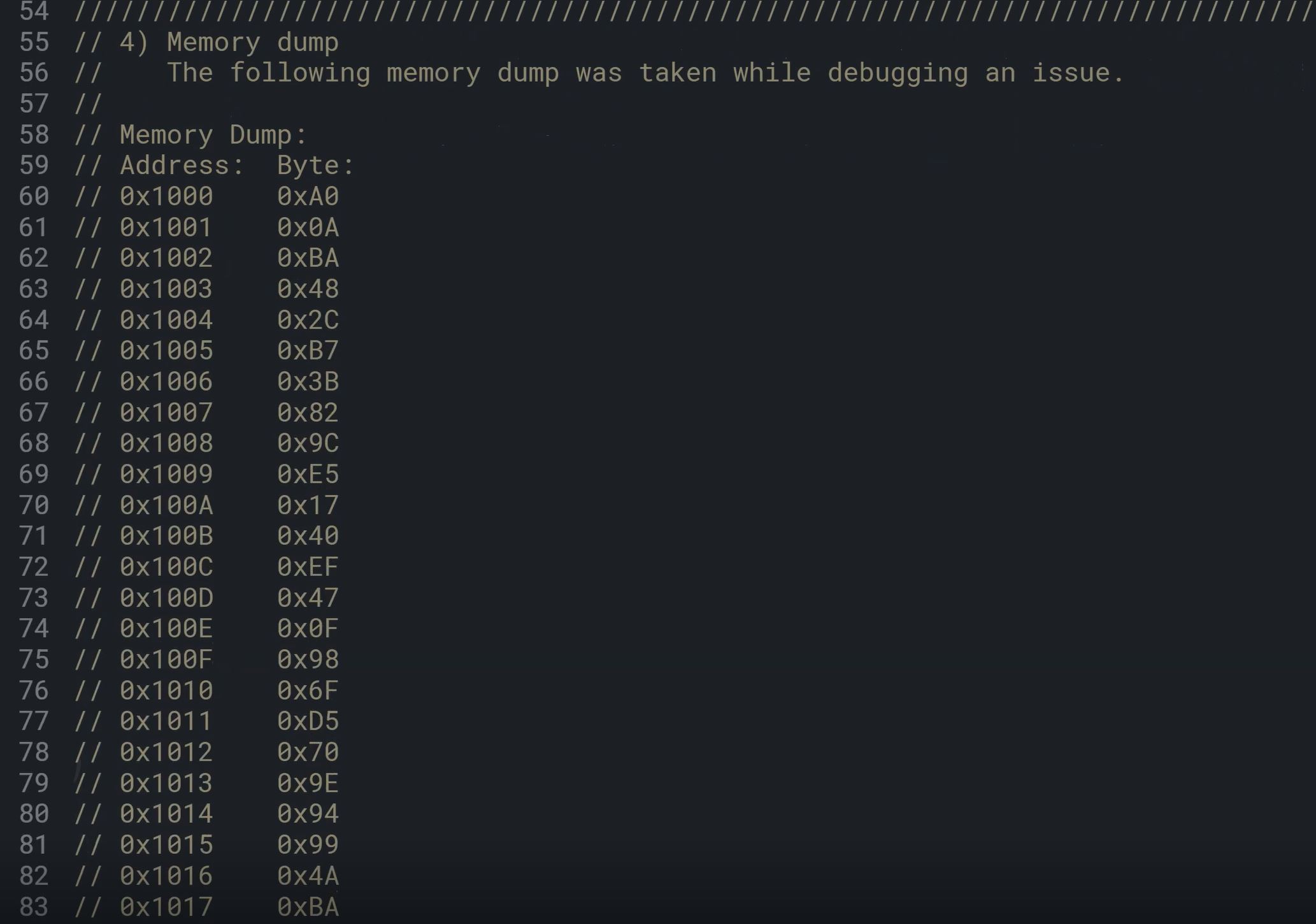Ok so the back story is this. I landed an online code interview with a company that shall remain nameless.
I know I am not ready for a job there but I was basically given the chance by an insider. Anyways below is a picture of the question.
I have experience doing register programming and dealing with micro-controllers, but all of this is on my own so I have never seen "real industry up-to-standard code" so to speak. I most definitely have never dealt with any "memory dump" from a micro-controller , because well I have never had such bug or even knew it could do that...
My question is two fold.. first is the questions in the picture... if anyone can answer them.... and my other question is...if a micro-controller fails or something goes wrong and it stops working then how does it do a memory dump? seems to me that it would require it to be in working order to execute something like that. otherwise youll just get the memory dump of what things looked like "before" the crash.


